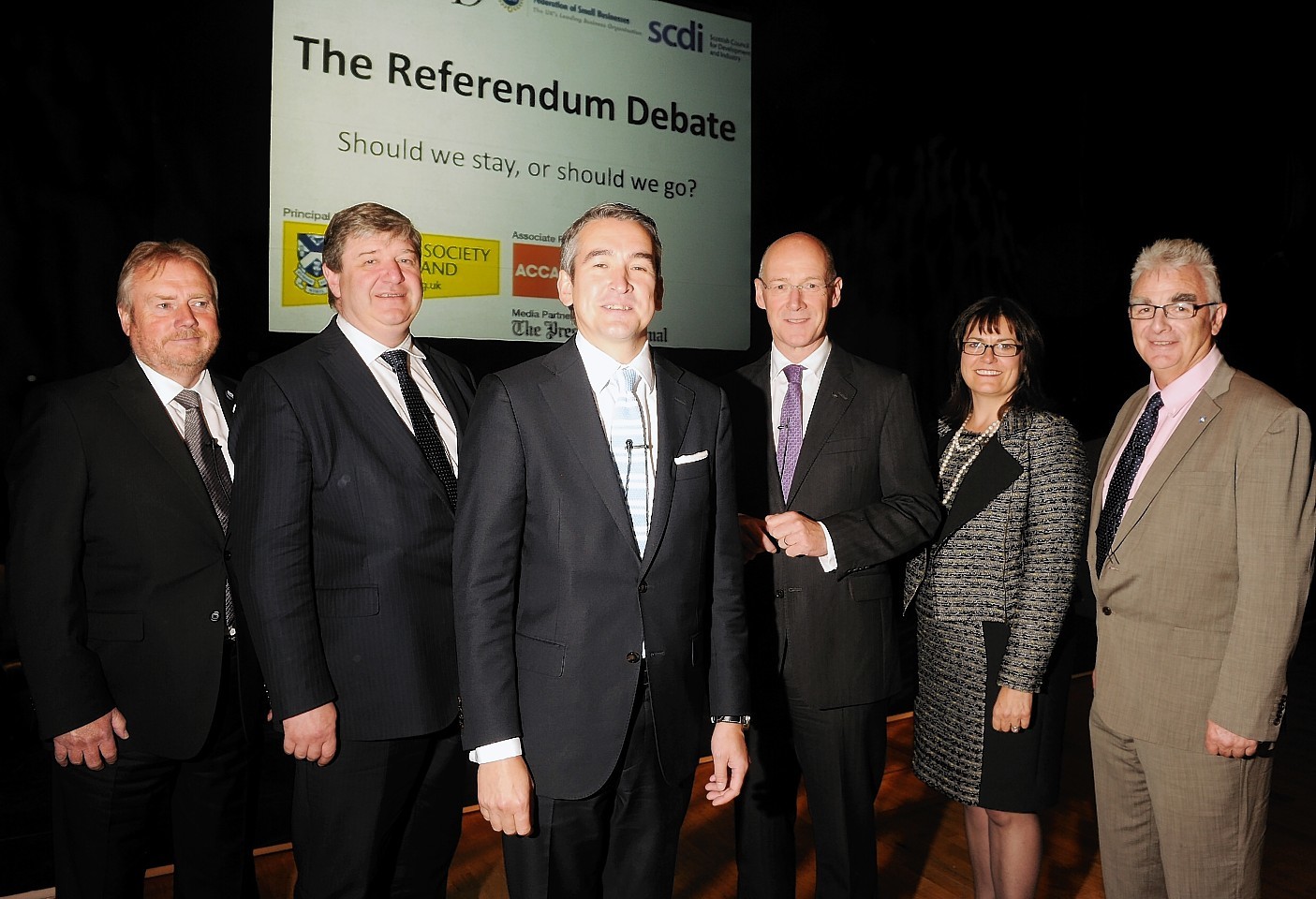Scottish Secretary Alistair Carmichael has questioned whether the SNP really wants to keep the pound – suggesting it would betray the party’s traditions.
The Liberal Democrat raised the stakes in the battle over the currency of an independent Scotland, but SNP Finance Secretary John Swinney accused him of playing “nonsensical politics”.
The big hitters clashed at a Press and Journal debate at the Eden Court Theatre in Inverness yesterday, held just four weeks before voters deliver their historic verdict.
About 200 members of the Highland business community listened and quizzed the panel, which also featured Lorna Jack from the Law Society of Scotland, Sandy Adam of Springfield Properties and Orion Group boss Alan Savage.
A poll at the end showed that 58% planned to vote No, 30% said Yes, and 12% were undecided.
Press and Journal Editor-in-Chief Damian Bates – who chaired the 70-minute debate – asked the audience if anyone had changed their mind as a result of the exchanges, but no-one raised their hand.
When the burning issue of currency was raised, Mr Swinney attempted to turn the tables and question whether any UK chancellor would want Scotland to walk away from its share of the national debt.
“What is the likelihood of George Osborne turning around to people in Scotland and saying, ‘ok, I’m letting you off with a debt of £100billion’?
“I’m an optimistic person in politics, but I’m not that optimistic.
“We’re taking a share of the liabilities, we’re also taking a share of the assets.”
But in a new line of attack, Mr Carmichael questioned the commitment of the Yes camp to such a sterling union.
“In this great independence which is so important for us to have, the first thing we will do is leave control of our economy in the central bank of a foreign country. That is absolute nonsense,” he said.
“I just don’t believe for a second it’s what the SNP want. I don’t believe for a second that Winnie Ewing tramped the streets of Hamilton in 1967 in order to keep the pound and have a currency union.”
In his opening pitch, Mr Carmichael had posed the question: “If Scottish independence was offered to you as a business proposition, would you invest your own money in it?”
But businessman and fellow panel member Mr Adam later said: “Yes Alistair, this is a proposition that I would take to my banker.”
He added: “And I see my banker sitting in the front few rows today – there’s a man that’s never said no to me, and I’m not going to say No on September 18.”
Mr Swinney highlighted the issue of dualling the notorious A9, saying the vital project would have been far further forward if the Treasury had not slashed capital spending in recent years.
“There is a crystal clear example of where power is exercised in Westminster in a fashion that wasn’t in accordance with the interests and agenda of the people of Scotland,” he said.
Mr Savage, a Better Together campaigner and former Inverness Caledonian Thistle chairman, suggested there was an anti-English sentiment underlying the independence movement.
“Patriotism is a good thing. Nationalism is completely different. History has had some very bad experiences with nationalistic movements. I often wonder when does nationalism end and racism begin? Do they overlap?” he asked.
The Law Society helped organise the event, and Ms Jack said its members wanted greater detail from both sides on a range of issues.
“I would describe what our members are looking for as the next layer of information,” she said.
“We have two very compelling pitches but we need more depth on the ‘what ifs’ beyond.”
Audience members quizzed the panel on tackling inequality, the impact of independence on the energy industry and Scotland’s EU status.
Brendan Burns, who is involved in the forestry industry in the Highlands, asked: “I want to know what the vision is from the No campaign. I may not agree with the Yes campaign but at least they have got a vision.”
In his response, Mr Carmichael said: “We are well down the road to a federal Britain.”
Mr Swinney also said that Scotland would never be the same after the independence debate.
“Whatever way we’re going to vote on September 18, I would argue with my last breath that the debate has been great for Scotland,” he said.
“Scotland will never be the same because we’ve opened up a debate about our aspirations for the future of our country.”
Speaking afterwards, Mr Bates said: “It was a really good debate.
“It was good to see so many people really engaged with lots of good points. It’s encouraging to see so many people turning out at this late and vital stage in the referendum debate.”
Fraser Grieve, Highlands director of SCDI, said: “The open, frank and well natured event showed the desire of the panel members to engage and listen to concerns and issues that people have.”
